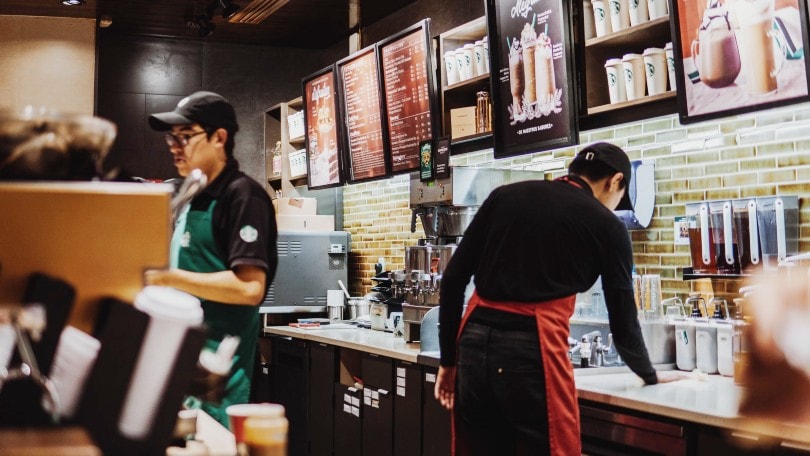
This page will teach you how to make drip coffee at home, and how to improve your technique to get great coffee every time. You will impress your family or your guests with a few simple techniques and secrets.
There are certainly many ways to brew coffee, and I enjoy most of them. However, on this page, we will focus on drip coffee.
Learn how to make drip coffee using a coffee machine or a pour-over cone. Brew great coffee at home following our step-by-step guide with technical details.
We will show you why pour-over is so popular, and why most of the coffee machines are poorly designed, and you can’t get a decent cup from these cheap devices.

What Is Drip Brew Coffee?
Wikipedia defines drip coffee brew as a method of coffee brewing that involves pouring hot water over roasted, ground coffee beans enclosed in a filter.
There are two main methods to brew drip coffee, with a drip coffee machine, or with a cone, the so-called pour-over method. There is a lot of hype around pour-over, and the hype is justified, because pour-over is a very easy way to brew a perfect cup, and there are fewer chances to mess up. Pour-over is also called hand drip because it is a manual brewing method. If you want to make the absolute best drip coffee, we recommend our tutorial on How To Make Pour Over Coffee At Home.
However, good automatic drip coffee machines can brew you a great cup and you don’t need to spend an hour in the kitchen preparing coffee for all of your guests. The only problem with auto drip is that there is very little room for tweaking. You are stuck with what the coffee maker manufacturer thought was the best coffee. They calibrate their machine to pour at a certain rate, with a certain water temperature, and you need to grind the coffee accordingly. While this isn’t a bad thing for most people, if you are one of those who likes to experiment and tweak their brew to perfection, we recommend you hand drip.

The most popular coffee brewing method, the humble automatic coffee maker, can make a great cup. This infographic is a little refresher, and is a great starting point. However, if your goal is to drink the best cup of coffee possible, check our detailed brewing guide below. Here is a different point of view on drip brewing, on this drip coffee brewing infographic guide.

How to Make Drip Coffee – the Perfectionist Guide
A perfect cup of coffee is the result of a series of personal choices, techniques, and perfect measurements of quantities and time. Yes, there is the technical side of making coffee, where grind size, brewing time, and water temperature need to be perfect, but there is also the personal touch to it. This personal preference can affect the roast type, the bean origins, and the type of filter used. I’ll show you in a bit how all these can affect your coffee, and don’t be afraid to try them, coffee taste is subjective.
The Water
Water is essential for drip coffee, and with poor water quality, you’ll get an average cup.
Tap water is not bad, but it has a bit too many minerals which are going to show in your coffee. Distilled water is not good, because it has no minerals and will render your cup too flat.
Filtering your water before brewing is a great choice; make sure you pick a filter that doesn’t completely strip your water of minerals, but it removes chlorine and other compounds that impart strong taste or odors. Another great choice is bottled water; the best is spring water because it has a good balance of minerals.
The Grind
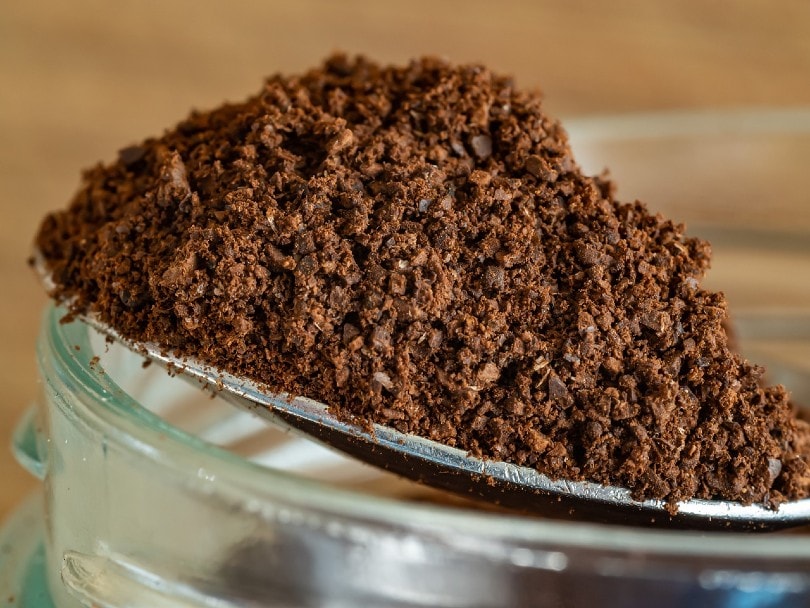
Although it is not as critical as with other brewing methods, the grind size is still very important, so don’t overlook it. The grind size is clearly marked on any decent burr grinder, and you can play with it within certain margins.
I am not downplaying the importance of a consistent grind. I am merely stating that this consistency is not as critical as with French press, or espresso.
Grind Size, Over-extraction, and Under-extraction
If you grind finer, you will prolong the steeping time, because water will pass slower through the compact coffee. Too coarse and the water will pass too fast, resulting in under-extraction. There is a lot of talking on the Internet about how over-extraction will result in bitter coffee. And the discussions mention brew time as the important factor in over-extraction.
This is not entirely true; a longer extraction time at the correct temperature will make the coffee stronger, but not bitter.
Think about Turkish coffee, if there was such a thing as over-extraction Turkish coffee would be the most over-extracted brew and it would be extremely bitter which is not the case. Turkish coffee is a bit over-extracted by the North American standards, however not to the point were we extract tannins and other undesirable compounds. It is just a very strong coffee. In the same way, dialing in you grind will get you a stronger or a milder cup.
A grind too fine will allow more soluble solids to pass through the filter, especially if you are using non-paper filters. This will make coffee less clear, which will disappoint many drip coffee lovers. (It will get it closer to espresso and Turkish coffee.) If you like stronger coffee, this is perfect for you.
So really, there is no over-extraction with the correct water temperature. However, if the water is too hot, coffee is scalded, and the bitter tones are extracted from coffee. Longer brewing time will intensify over-extraction problems. To be more exact: the more time you use the wrong water temperature the more bitterness you will get.
On the other hand, under-extraction is going to result in a flat coffee, with little caffeine, no aromas, and no body. Coarse grinds need more time in the water to be fully saturated, but water passes easier through coarse grinds. So grinding too coarse will result in a weak, tasteless coffee.
As a conclusion, lower brewing temperature is better, but the brewing time might need to be adjusted.
Coffee Grinder
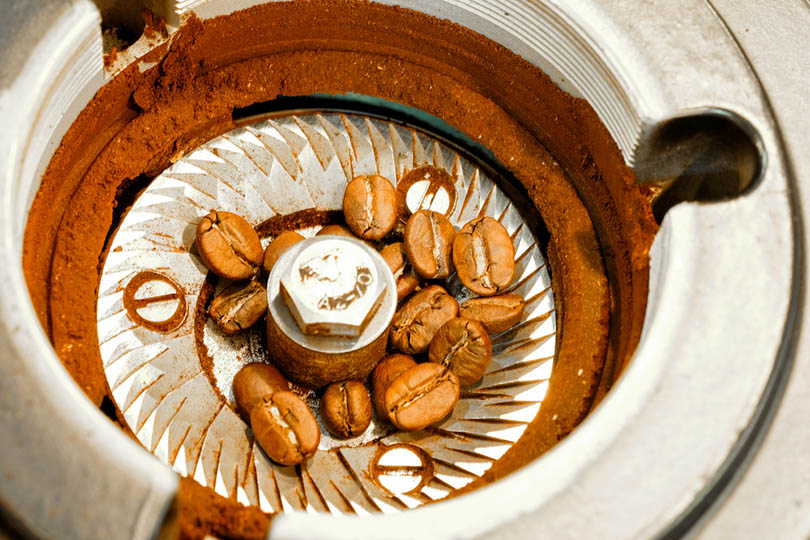
The best way is to grind your coffee at home. This way the coffee is the freshest possible, and no aromas and flavors are lost. Ground coffee loses its aromatic oils in about 30 minutes from grinding if left in open air. That means that the best time to grind is just before brewing, to retain as much of the goodness in the beans as possible. For these reasons, any coffee enthusiast has a coffee grinder in their kitchen,
The coffee grinder needs to be a good quality one, burr grinders are the best. Blade grinders cannot grind uniform, so you will have boulders and dust in the same batch. This results in too much grounds passing through the filter and clouding the final cup.
Or, the fines will clog up your filter and the coffee will pour too slow, resulting in over extraction, (see next section for more details).
And finally, given the way coffee dissolves in water, with an uneven grind. the larger bits extract less, and the finer bits extract more. You can, in extreme cases, get a combination of sour and bitter coffee, (under-extracted and over-extracted).
You have to do a little research when you buy your burr grinder, and don’t go with very cheap grinders, because these are sometimes worse than blade mills. Decent burr coffee grinders run for about 100$, and no, you don’t need the more expensive ones, unless you brew espresso… All you need from your coffee grinder is a uniform grind and some degree of size adjustment.
I have to insist on this: grind minutes before brewing. The fresher the coffee is, the better the final cup.
Brewing Temperature
Brewing temperature is, in fact, one of the most important factors for brewing drip coffee, (or any other brew type). The ideal temperature for drip is between 195 and 205 degrees Fahrenheit. It doesn’t matter if you use a drip cone or the Technivorm coffee maker, this is the temperature water should have when it touches the grinds.
If you use a coffee machine there is not much to do, you just hope that your machine will deliver the water at the correct temperature; however, most coffee machines don’t.
A couple of good options are the Technivorm, a Dutch engineering marvel, and Bonavita, a German designed coffee maker, commercialized by a Seattle based company.
A good drip coffee machine is slightly more expensive than the average, but the design and the materials ensure that when water touches the grinds, it has that perfect temperature; not hotter, and not colder.
Melitta Pour Over Cone

For a pour over drip, use an electric kettle with temperature control, and set the water temperature to 205 degrees Fahrenheit. This will result in a slightly lower temperature at the time of pouring, somewhere around 200 degrees, which should be perfect.
If you can’t afford an electric kettle, or you are camping, and electricity is not an option, just bring the water to a boil, and let it sit for a minute or so. This is a very rough approximation since it depends a lot on the outside temperature, the pan/kettle used, etc…
The Coffee Maker
The coffee maker is the most important piece of equipment. Even if you are using a manual dripper, you have to be very careful when selecting it. An automatic drip coffee maker controls most of the measuring and timing tasks, so you don’t have to. This is why automatic drip coffee makers are so popular. However, you have to be careful when purchasing your equipment. Many coffee machines are built very economically, in order to save costs. This means that brewing parameters are not the primary concern.
Here is a review comparing the SCAA Certified Coffee Makers. These coffee makers are tested by the SCAA and certified to respect all the brewing parameters for a perfect drip coffee. These coffee makers are more expensive than the average machine on the market, but they are worth the extra expense. A Technivorm coffee maker, for instance, could last you a long time, their reliability is renown.
If you cannot see yourself spending the money for a certified coffee maker, you can look at one of the budget drip coffee makers. While not certified, these are great appliances, that can brew a great cup.
How Much Coffee and How Much Water

As a general rule, when you brew coffee, you need 2 tablespoons of ground coffee to six ounces of water. The NCAUSA recommends 1-2 TBS of coffee for 6 ounces of water. However, this is just a general rule, and some people have sensitive stomachs, so they have to use less coffee, and some people like a strong brew and they could use a bit more.
Start from the 2 spoons per six ounces ratio, and make it your own. One thing to note with drip coffee machines is that the more coffee you brew at once the less coffee you need.
When brewing two cups only, the grinds don’t have the necessary time to fully absorb the water, and the incomplete saturation will result in a weak cup. This is why a drip cone is the best option for a single cup. Another great option for drip-style single serve is the Hamilton Beach Scoop, which is designed to brew drip single serve, (I love this device).
With coffee ground coarser, you may need a bit more, and conversely, if you grind finer, less coffee is needed, because the water stays longer in contact with the grinds, and because the saturation takes less time, hence you will have a better extraction.
Brewing Time
Depending on the brewing type, the time that coffee needs to be immersed in water is different. For drip coffee, (pour over, or coffee machine), this time is about 5 minutes. If your coffee machine drips too fast, you will have an under-extracted cup. If the water is not hot enough, that means between 195 and 205 °F, (90 – 96 °C), brewing longer will help you extract properly.
The lower the water temperature is, the longer the steeping time needs to be. This is actually the concept of cold brew, where the brew is kept to infuse for 48 hours.
To recap, the normal drip time is around 5 minutes.

The 5 Rules for Perfect Drip Coffee Brewing:
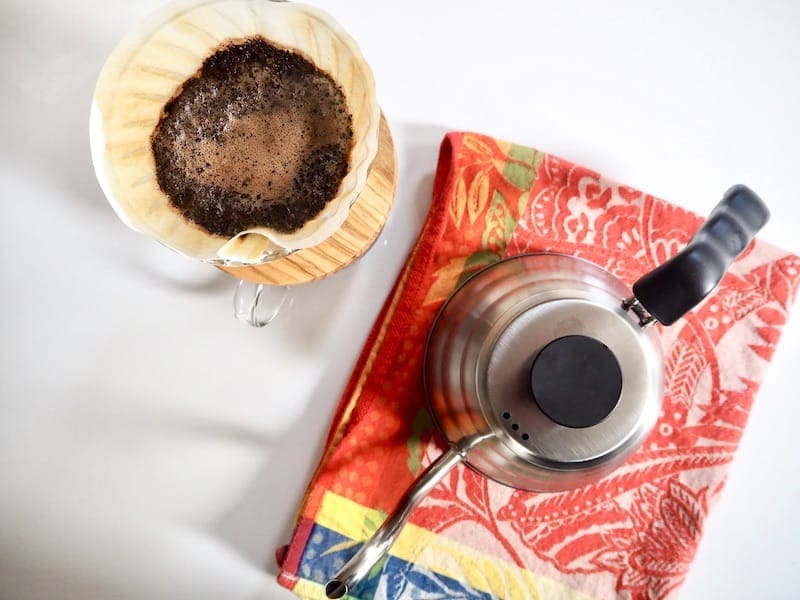
1. Choose the right filter.
The filter is one of the most important aspects of drip brewing, and the type of filter used determines the body and the taste.
Paper filters are dense, retaining more of the soluble solids in coffee, thus giving you a clear cup. Because they are so dense they also retain the oils in coffee, which will flatten the taste of your cup.
If you use a paper filter, rinse it with water before adding the coffee. This will clean the filter of paper dust and will preheat the basket, or cone.
The better alternative is the mesh filter, but with a mesh filter you have to grind coarser and you absolutely need a good grinder that delivers a uniform grind. You will have to adjust your grind accordingly, but paper filters are the most forgiving in terms of grind consistency and size. With paper filters, avoid the cheap ones, you will love your cup of joe brewed in quality filters. Good brands are Melitta and Filtropa. The best alternative is the gold plated filter which will last you forever.
2. Drink your coffee immediately.
Coffee should be served right after it was brewed. Leaving coffee on the burner will make the aromas and flavors evaporate and you will end up with a burned tasting cup. The best coffee is fresh coffee.
Only use good quality fresh beans. If your coffee beans are older than a month, they lost all the flavor, and coffee will be insipid. Best places to buy coffee are the small roasters, these roast small batches, and there are lower chances to get old beans from them. Make sure you store coffee properly; check my post about how to store coffee beans, light and oxygen are the worst enemies of awesome coffee. Quality coffee is usually 100% Arabica, make sure you can find marked this on the label. Don’t go for the big brands, they have a marketing army to convince everybody about their perfect beans. In reality, they take shortcuts in order to maximize profit.
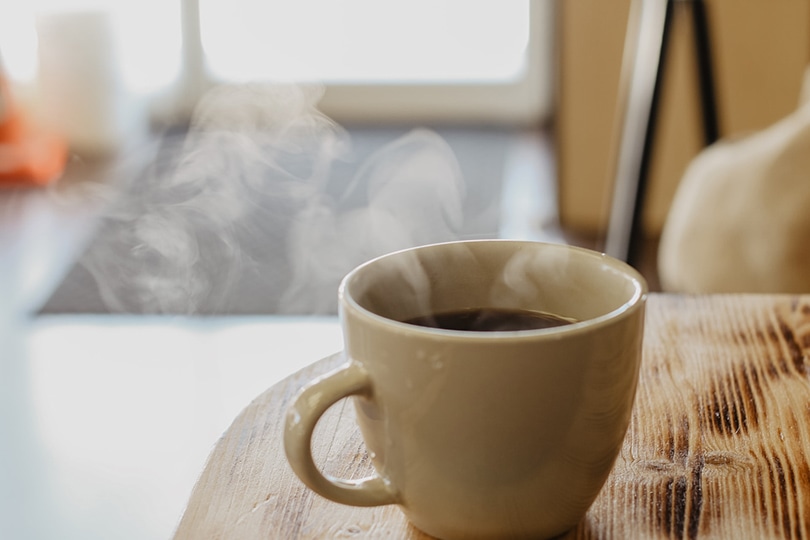
3. Grind the coffee at home, seconds before brewing.
Coffee beans start degrading the minute you finish the roasting, but when you grind coffee the process accelerates a few times. The reason is that there is more surface exposed to air, and the oils can disperse easier when they are not contained anymore. A good grinder for home use is the Capresso. Blade grinders or cheap burr grinders are not acceptable if you want great coffee.
4. Keep your coffee maker clean.
The carafe, the water reservoir, and the pipes inside the machine need to be cleaned from time to time. The inside of the machine needs descaling from time to time, to remove the calcium deposits. Those will affect the functionality of the machine and the taste of your coffee.
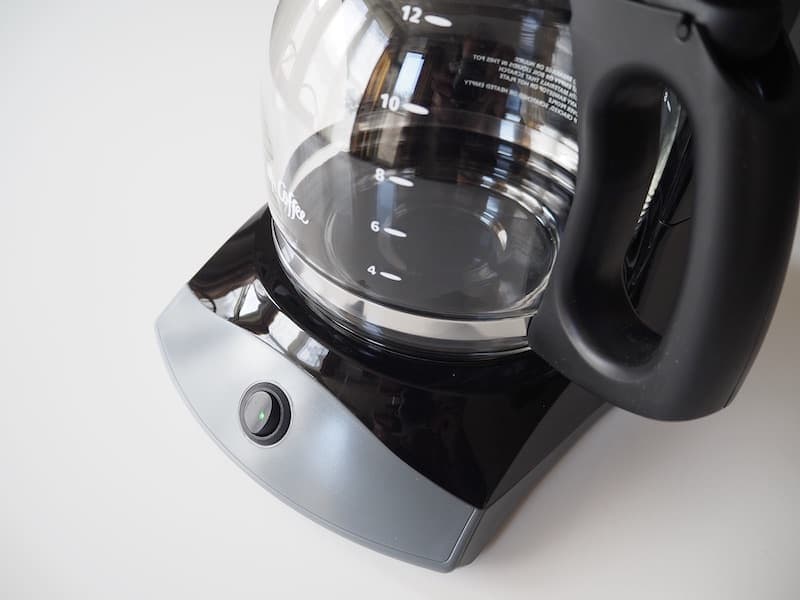
5. Make sure your coffee is uniformly saturated.
If your brewer doesn’t have a showerhead, you can stop the dripping for the first 20 seconds, to accumulate some water in your basket, and then stir the grinds to fully saturate them with water.






